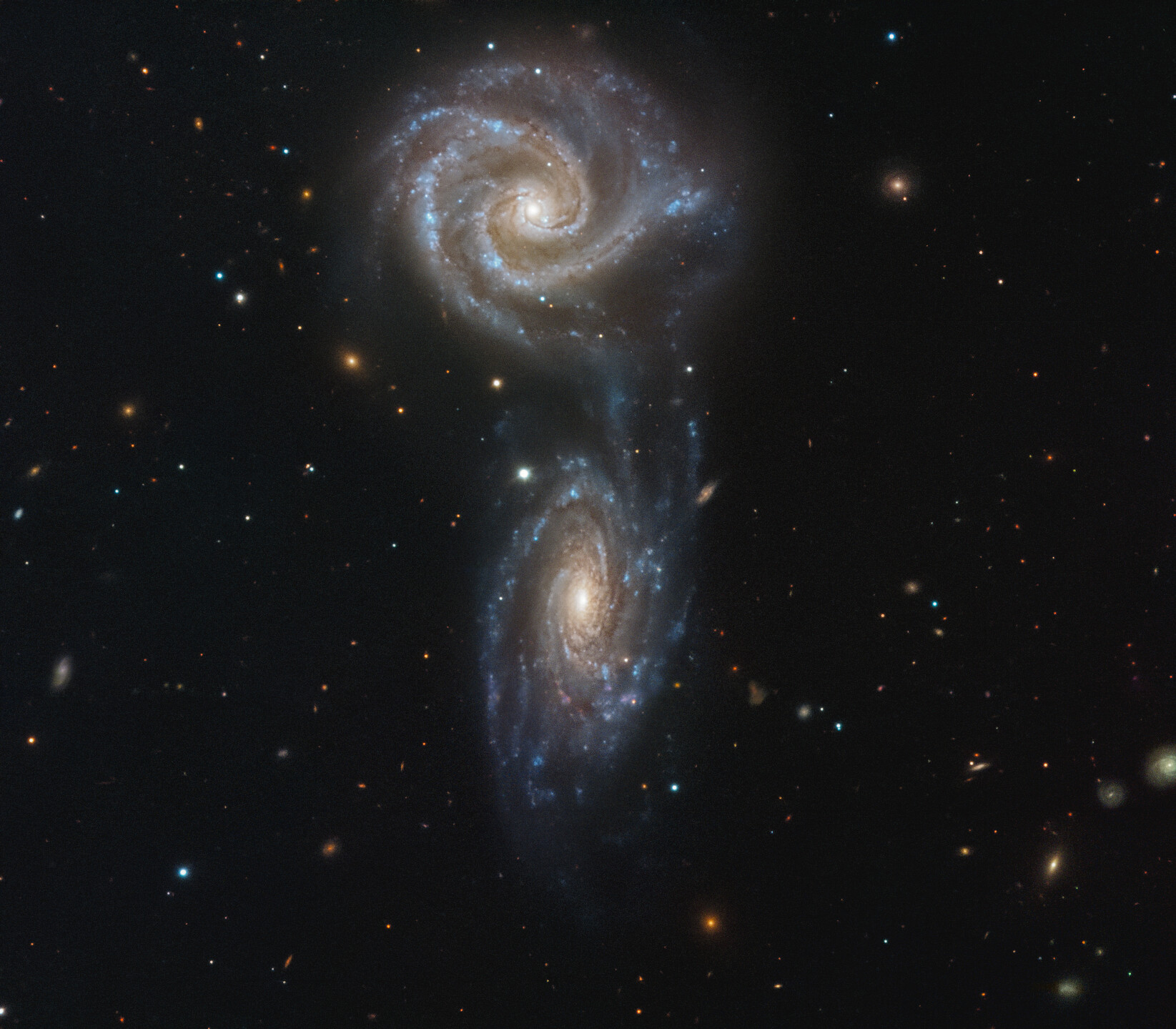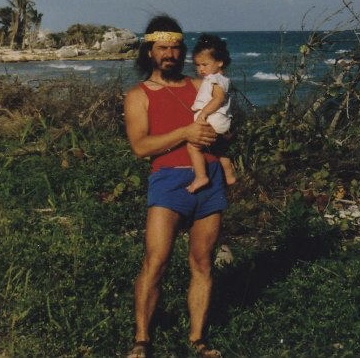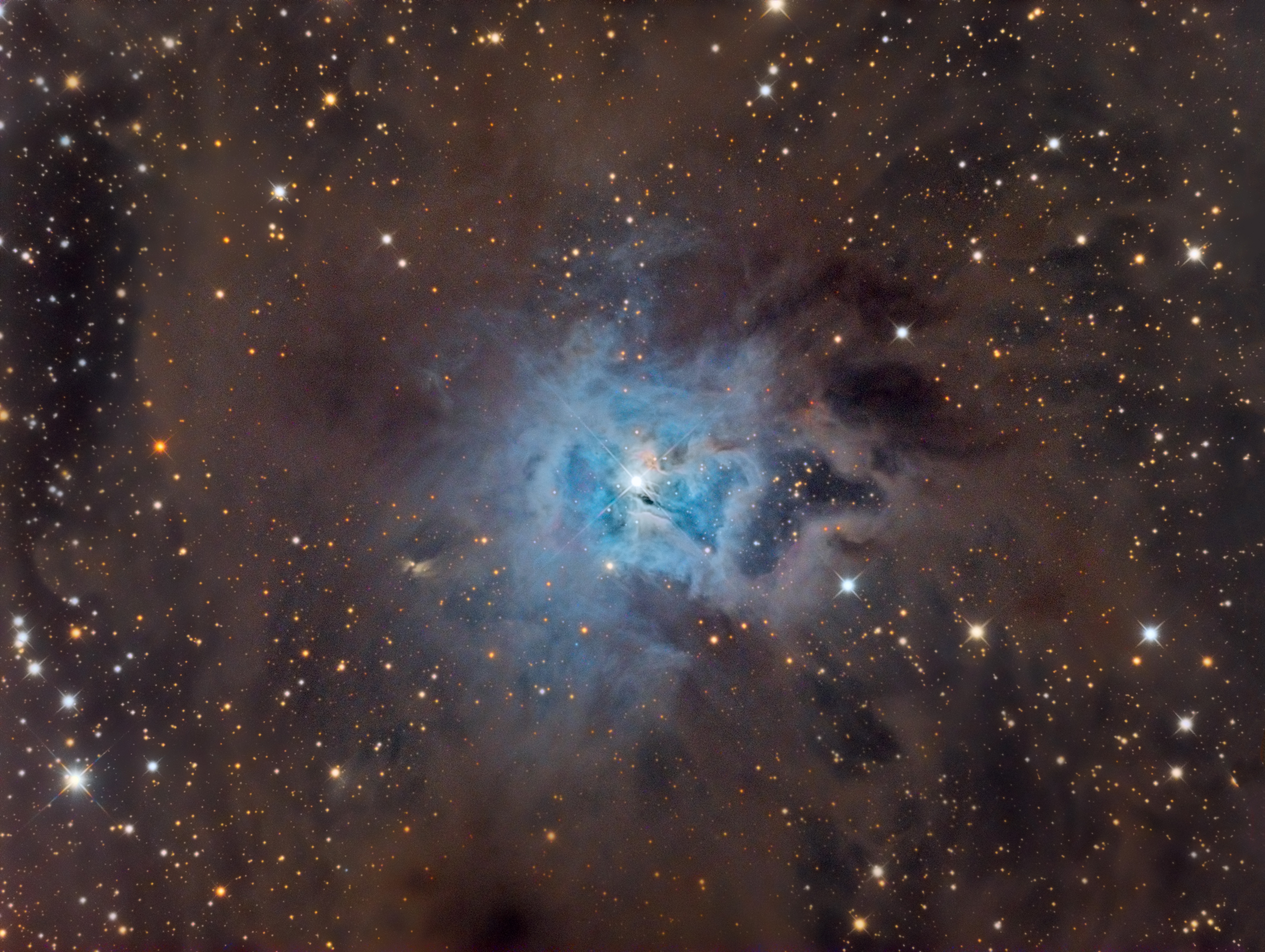Blog
George Allen Russell (June 23, 1923 – July 27, 2009) was an American jazz pianist, composer, arranger and theorist. He is considered one of the first jazz musicians to contribute to general music theory with a theory of harmony based on jazz rather than European music, in his book Lydian Chromatic Concept of Tonal Organization (1953).
Russell was born in Cincinnati, Ohio to a white father and a black mother, later the adopted only child of a nurse and a chef on the B & O Railroad, Bessie and Joseph Russell. Young Russell sang in the choir of the African Methodist Episcopal Church and listened to the Kentucky Riverboat music of Fate Marable. He made his stage debut at age seven, singing “Moon Over Miami” with Fats Waller.
Surrounded by the music of the black church and the big bands which played on the Ohio Riverboats, and with a father who was a music educator at Oberlin College, he started playing drums with the Boy Scouts and Bugle Corps, receiving a scholarship to Wilberforce University, where he joined the Collegians, a band noted as a breeding ground for great jazz musicians including Ben Webster, Coleman Hawkins, Charles Freeman Lee, Frank Foster, and Benny Carter. Russell served in that band at the same time as another noted jazz composer, Ernie Wilkins. When called up for the draft at the beginning of World War II, he was quickly hospitalized with tuberculosis, where he was taught the fundamentals of music theory by a fellow patient.
more...Milton John Hinton (June 23, 1910 – December 19, 2000) was an American double bassist and photographer.
Regarded as the Dean of American jazz bass players, his nicknames included “Sporty” from his years in Chicago, “Fump” from his time on the road with Cab Calloway, and “The Judge” from the 1950s and beyond. Hinton’s recording career lasted over 60 years, mostly in jazz but also with a variety of other genres as a prolific session musician. He was also a photographer of note, praised for documenting American jazz during the 20th Century.
Hinton was born in Vicksburg, Mississippi, the only child of Hilda Gertrude Robinson, whom he referred to as “Titter,” and Milton Dixon Hinton. He was three-months-old when his father left the family. He grew up in a home with his mother, his maternal grandmother (whom he referred to as “Mama”), and two of his mother’s sisters.
His childhood in Vicksburg was characterized by extreme poverty and extreme racism. Lynching was a common practice at the time. Hinton said that one of the clearest memories of his childhood was when he accidentally came upon a lynching.
more...https://www.youtube.com/watch?v=f7P8wusL1Z0
more...This image shows a pair of interacting galaxies known as Arp 271. Individually, these galaxies are named NGC 5426 and NGC 5427; both are spirals, and both are roughly the same size.
Some astronomers believe that these galaxies are in the process of merging to form a single entity. This interaction will create increasing numbers of new stars over the next few million years, some of which can be seen within the “bridge” of gas connecting the two galaxies. This kind of collision and interaction might also happen to our own galaxy, the Milky Way, which is likely to collide with the neighbouring Andromeda Galaxy in about five billion years time.
These galaxies lie over 120 million light years away from us, and were discovered by the German-British astronomer William Herschel in 1785. Herschel was a prolific scientist, also discovering both infrared radiation and the planet Uranus.

Todd Harry Rundgren (born June 22, 1948 Philadelphia, PA) is an American multi-instrumentalist, singer, songwriter, and record producer who has performed a diverse range of styles as a solo artist and as a member of the band Utopia. He is known for his sophisticated and often-unorthodox music, his occasionally lavish stage shows, and his later experiments with interactive entertainment. He also produced music videos and was an early adopter and promoter of various computer technologies, such as using the Internet as a means of music distribution in the late 1990s.
A native of Philadelphia, Rundgren began his professional career in the mid 1960s, forming the psychedelic band Nazz in 1967. Two years later, he left Nazz to pursue a solo career and immediately scored his first US top 40 hit with “We Gotta Get You a Woman” (1970). His best-known songs include “Hello It’s Me” and “I Saw the Light” from Something/Anything? (1972), which get frequent air time on classic rock radio stations, and the 1983 single “Bang the Drum All Day“, which is featured in many sports arenas, commercials, and movie trailers. Although lesser known, “Couldn’t I Just Tell You” (1972) was influential to many artists in the power pop genre. His 1973 album A Wizard, a True Star remains an influence on later generations of bedroom musicians.
Rundgren is considered a pioneer in the fields of electronic music, progressive rock, music videos, computer software, and Internet music delivery.He organized the first interactive television concert in 1978, designed the first color graphics tablet in 1980, and created the first interactive album, No World Order, in 1994. Additionally, he was one of the first acts to be prominent as both an artist and producer. His notable production credits include Badfinger‘s Straight Up (1971), Grand Funk Railroad‘s We’re an American Band (1973), the New York Dolls‘ New York Dolls (1973), Meat Loaf‘s Bat Out of Hell (1977) and XTC‘s Skylarking (1986).
https://www.youtube.com/watch?v=ZHxLm9EWdms
more...Born June 22, 1937 in Dayton, TX Died July 6, 2004 in Lake View Terrace, CA
Few blues guitarists can boast the varied résumé of Texas native Cal Green. From blues to doo wop to jazz, Green has played ’em all, and done each idiom proud in the process.
Green‘s idol as a teenager was Lone Star wonder Clarence “Gatemouth” Brown. So pervasive was Gate‘s sway that Green and his ninth-grade pal Roy Gaines used to stage mock guitar battles imitating their idols (Gaines was a T-Bone Walker disciple) at various Houston bars. Cal didn’t have to leave the house to find worthy competition; his older brother Clarence was also an accomplished picker who cut a load of killer instrumentals (notably 1962’s “Red Light”) for small Lone Star label.
Cal Green played on RPM Records releases by Quinton Kimble and pianist Connie McBooker, but his main claim to fame is as the guitarist for Hank Ballard & the Midnighters, who roared through Houston in 1954 looking to replace their just-drafted axeman Arthur Porter, scooped up teenaged Green, and went on their way.
Green received plenty of solo space during his Midnighters stint. His ringing guitar provided a sturdy hook for the group’s rocker “Don’t Change Your Pretty Ways” and figured prominently on “Tore Up Over You” (later revived in blistering fashion by rockabilly giant Sleepy LaBeef) and “Open Up the Back Door.” The Midnighters‘ label, Cincinnati-based Federal Records, thought enough of Green‘s slashing Texas licks to cut a couple of 45s on him in 1958: the double-sided instrumental “The Big Push”/”Green’s Blues” and a pair of vocals, “I Can Hear My Baby Calling”/”The Search Is All Over.”
A 1959 marijuana bust sent Green to a Texas slammer for 21 months, but he briefly rejoined the Midnighters in 1962. After that, jazz became Green‘s music of choice. He gigged with organists Brother Jack McDuff and Charles Kynard, and then singer Lou Rawls, eventually settling in L.A. He recorded several singles and eventually an album, Trippin’ for the Los Angeles-based Mutt & Jeff label in the late ’60s. An acclaimed but tough-to-find 1988 album for Double Trouble, White Pearl, showed conclusively that Green still knew his way around the blues on guitar. On July 6, 2004, he passed away at his California home. He was 69.
Hermeto Pascoal (born June 22, 1936) is a Brazilian composer and multi-instrumentalist. He was born in Lagoa da Canoa, Alagoas, Brazil. Pascoal is a legendary figure in the history of Brazilian music, mainly known for his abilities in orchestration and improvisation, as well as being a record producer and contributor to many Brazilian and international albums.
Pascoal comes from northeastern Brazil, an area that lacked electricity at the time he was born. He learned the accordion from his father and practised for hours indoors as, being albino, he was incapable of working in the fields with the rest of his family.
Hermeto’s career began in 1964 with appearances on several Brazilian recordings alongside relatively unknown groups. These now-classic albums and the musicians involved (Edu Lobo, Elis Regina, Cesar Camargo Mariano) established widely influential new directions in post-bossa nova Brazilian jazz.
more...Kristoffer Kristofferson (born June 22, 1936) is an American singer-songwriter and actor. Among his songwriting credits are the songs “Me and Bobby McGee“, “For the Good Times“, “Sunday Mornin’ Comin’ Down“, and “Help Me Make It Through the Night“, all of which were hits for other artists. Kristofferson composed his own songs and collaborated with Nashville songwriters such as Shel Silverstein.
In 1985, Kristofferson joined fellow country artists Waylon Jennings, Willie Nelson and Johnny Cash in forming the country music supergroup The Highwaymen, and formed a key creative force in the outlaw country music movement that eschewed the Nashville music machine in favor of independent songwriting and producing. In 2004, Kristofferson was inducted into the Country Music Hall of Fame. As an actor, he is known for his roles in Pat Garrett & Billy the Kid (1973), Blume in Love (1973), Alice Doesn’t Live Here Anymore (1974), A Star Is Born (1976) (which earned him a Golden Globe Award for Best Actor), Convoy (1978), Heaven’s Gate (1980) and Blade (1998).
Kristoffer Kristofferson was born in Brownsville, Texas, to Mary Ann (née Ashbrook) and Lars Henry Kristofferson, a U.S. Army Air Corps officer (later a U.S. Air Force major general). His paternal grandparents emigrated from Sweden, while his mother had English, Scots-Irish, German, Swiss-German, and Dutch ancestry Kristofferson’s paternal grandfather was an officer in the Swedish Army. When Kristofferson was a child, his father pushed him towards a military career.
At the age of 17, Kristofferson took a summer job with a dredging contractor on Wake Island. He called it “the hardest job I ever had”.
more...Mantilla played on hundreds of recordings, including some that have become important parts of jazz history, like Max Roach’s M’Boom, Herbie Mann’s Flute, Brass, Vibes and Percussion and Charles Mingus’s Cumbia & Jazz Fusion. He was one of the three most recorded conga players in the history of jazz; he held that distinction with Ray Barretto and Cándido Camero.
Like Cándido, one of his heroes, Mantilla championed the use of multiple congas, employing up to four drums at times, each tuned to a specific pitch. Also like Cándido, he championed the performance of solo pieces on congas.
But Mantilla was, as he liked to put it, the complete percussionist — skilled not only on congas but also a range of other instruments. “I loved the way Ray played charanga-style timbales,” Barretto once said. “Remember, you have only one bell to keep time accompanying the flute and violins, and you have to play rock-solid time with swing.”
Mantilla described his own music as “Latin Jazz with authentic Latino rhythms.” He released nine albums as a leader. His first was Mantilla, in 1978, and his most recent was High Voltage, almost 40 years later. He recorded a follow-up, Rebirth, scheduled for release this year on Savant Records.
“It’s a combination of the familiar and the eclectic,” said longtime Mantilla associate Mike Freeman, who plays vibraphone on that album. The title, Rebirth, he explained, “is a reference to Ray surviving cancer two years ago.”
Raymond Mantilla was born in St. Francis Hospital in the South Bronx on June 22, 1934. His father, Carlos Mantilla Ghilardi, was an architect and engineer who was recruited to work on the building of the George Washington Bridge. He then began working for the U.S. Intelligence Services in a branch in Peru, just before the United States’ entry into World War II. Ray’s mother, Ramona Maldonado, hailed from the city of Vega Baja in Puerto Rico, and owned and operated a bodega in the South Bronx.
https://www.youtube.com/watch?v=K9Fc_ZoL7xQ
more...mick is releasing his Reggae Versions of his favorite 60’s R&R hits. Club Calabash Virtual Reggae Performance from last Friday.
Performing “Its All Over Now/Last Time” at about 40 minutes in.
https://www.facebook.com/charles.petrus.3/videos/10217043823752640/


Waorani, Ecuador










mick with daughter Maya in Isla Mujeres

mick with son Mario at Minnesota Renaissance Festival


These clouds of interstellar dust and gas have blossomed 1,300 light-years away in the fertile star fields of the constellation Cepheus. Sometimes called the Iris Nebula, NGC 7023 is not the only nebula in the sky to evoke the imagery of flowers, though. Still, this deep telescopic view shows off the Iris Nebula’s range of colors and symmetries in impressive detail. Within the Iris, dusty nebular material surrounds a hot, young star. The dominant color of the brighter reflection nebula is blue, characteristic of dust grains reflecting starlight. Central filaments of the dusty clouds glow with a faint reddish photoluminesence as some dust grains effectively convert the star’s invisible ultraviolet radiation to visible red light (text taken from an APOD).

Horace Swaby (21 June 1954 – 18 May 1999), known as Augustus Pablo, was a Jamaican roots reggae and dub record producer, melodicaplayer and keyboardist, active from the 1970s until his death.
He popularised the use of the melodica (an instrument at that time primarily used in Jamaica to teach music to schoolchildren) in reggae music. His album King Tubbys Meets Rockers Uptown (1976) is often regarded as one of the most important examples of dub.
He was born in St. Andrew, Jamaica, and learned to play the organ at the Kingston College School, where a girl lent him a melodica, an instrument that fascinated him. He also met Herman Chin Loy, who after working at his cousin Leslie Kong‘s Beverley’s record shop, had set up his own Aquarius store in Half Way Tree. Swaby recorded early tracks including “Higgi Higgi”, “East of the River Nile”, “Song of the East” and “The Red Sea” between 1971 and 1973 for Chin-Loy’s Aquarius Records. Chin Loy had previously used the name Augustus Pablo generically for keyboard instrumentals recorded by Lloyd Charmers and Glen Adams, and Swaby took the name for this recording.
“East of the River Nile”, a unique blend of East Asian and Jamaican sounds, became a moderate hit. He soon joined Now Generation (Mikey Chung‘s band) and played keyboard with them while his friend Clive Chin began his own career as a record producer. Pablo and Chin recorded “Java” (1972) together, as soon as Pablo quit Now Generation and Clive was able to obtain studio time. This instrumental was a massive hit and launched Pablo’s solo career. He recorded with Chin and others including Lee Perry and Chin’s uncle, Leonard Chin. Pablo scored another smash hit with “My Desire” (John Holt).
Pablo formed the labels Hot Stuff, Message and Rockers (named after his brother’s soundsystem, Rockers), and released a steady stream of well-received instrumentals, mostly versions of older hits from Studio One. In spite of his success with Rockers, Pablo’s 1974 album, This Is Augustus Pablo, was recorded with Clive and Pat Chin. This was followed by a collaboration with the legendary reggae engineer King Tubby, 1975’s Ital Dub.
more...Nils Hilmer Lofgren (born June 21, 1951) is an American rock musician, recording artist, songwriter, and multi-instrumentalist. Along with his work as a solo artist, he has been a member of Bruce Springsteen‘s E Street Band since 1984, a member of Crazy Horse, and founder/frontman of the band Grin. Lofgren was inducted into the Rock and Roll Hall of Fame as a member of the E Street Band in 2014.
Lofgren was born in Chicago in 1951 to an Italian mother and a Swedish father. When he was a young child, the family moved to the Washington, D.C., suburb of Bethesda, Maryland. Lofgren’s first instrument was classical accordion, beginning at age five, which he studied seriously for ten years. After studying classical music and jazz, throughout his youth, Lofgren switched his emphasis to rock music, and focused on the piano and the guitar.
more...Chuck Anderson is an American jazz guitarist based in suburban Philadelphia, Pennsylvania.
Anderson was born in Chicago, Illinois on June 21, 1947. He began guitar lessons at the age of 14. By 1963, he was teaching guitar and playing in a band. At the age of 19, he began studies with Dennis Sandole. Sandole was notable for his association with John Coltrane, James Moody, Michael Brecker, Pat Martino, and Jim Hall. In 1969, Anderson was offered the staff guitar job at the Latin Casino in Cherry Hill, New Jersey.[3] The Latin was a popular venue before gambling came to Atlantic City. During that period, he accompanied and performed with Bobby Darin, Billy Eckstine, and Peggy Lee, playing fourteen shows a week.
In 1973, he returned to jazz and formed the Chuck Anderson Trio with Al Stauffer on bass and Ray Deeley on drums. Four years later, he got the staff guitar job at Valley Forge Music Fair in Devon, Pennsylvania. He worked with Nancy Wilson, Michel LeGrand, and Anthony Newley. In the years that followed, he concentrated on teaching, composing, and session work.
He has written a column, “The Art and Science of Jazz”, for the web magazine All About Jazz.
more...More Posts
- The Cosmos with Abell 1656
- Percy Heath Day
- Reverend Gary Davis Day
- World Fusion with Les Moines Bouddhistes
- Daily Roots with the Gladiators
- The Cosmos with N11
- Ray Barretto Day
- Toots Thielemans Day
- Duke Ellington Day
- World Music with Taína Asili
- Daily Roots with the Gladiators
- Dumbeck-Riqq Teaching Collection
- The Cosmos with M96
- Mickey Tucker Day
- John Tchicai Day
- Oliver Jackson Day
- World Music with Bakalina Velika
- Daily Roots with Joe Cocker
- The Cosmos with NGC 5128
- Freddie Waits Day